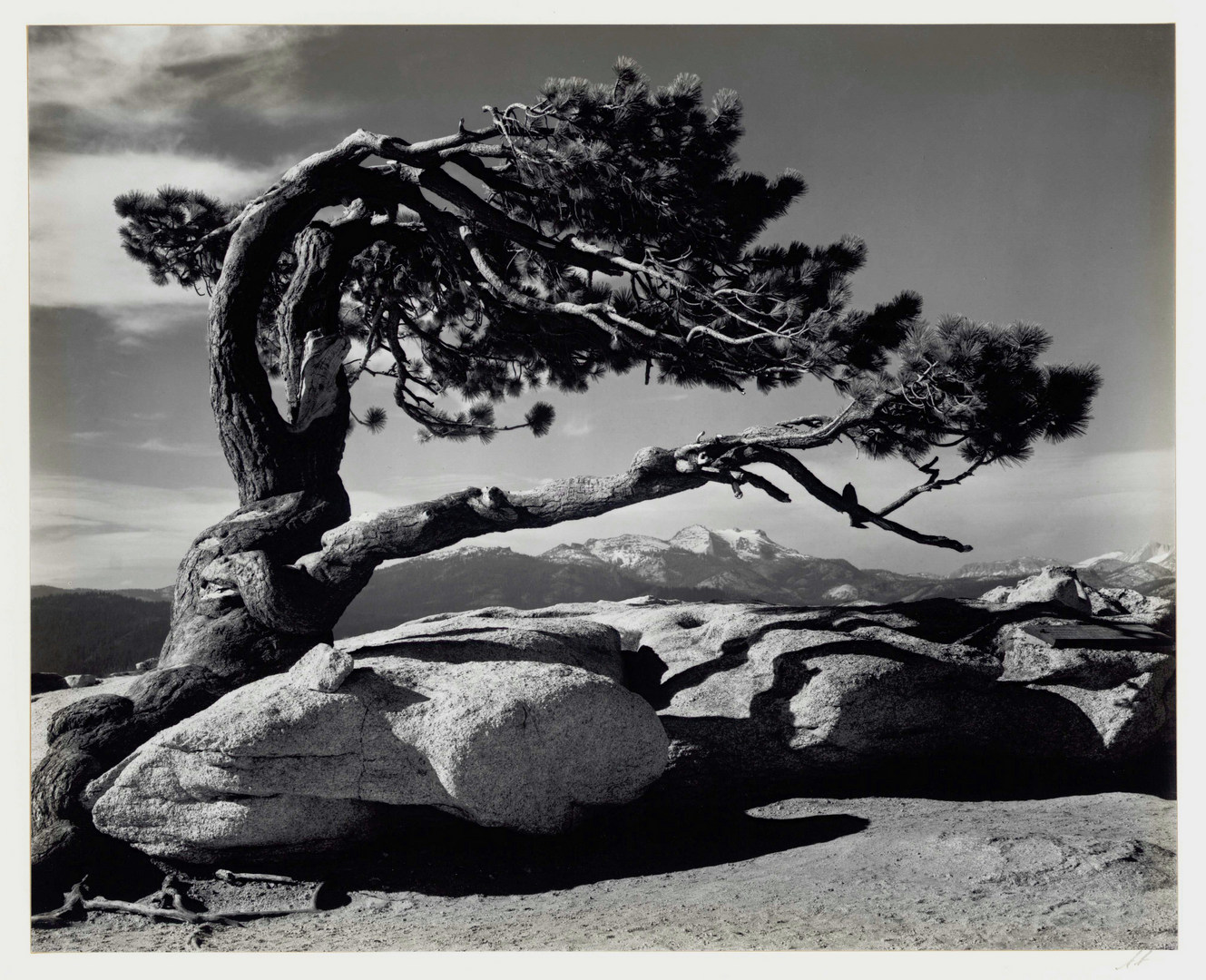I’ve seen a few articles that lay out the most famous photographers of all time, but the problem with fame is, it says more about the person than the quality of the work. No doubt you’ve heard of David Bailey, maybe some of you know Karl Lagerfeld, Tim Walker and Nick Knight? Bailey is a well known name, but was (is) his work any good? Or was he just in the right place at the right time? Moreover, should we be continuing to include someone like him (who has a reputation as a womaniser) on a list that celebrates the best of the best? It’s a tough call, and the debate of whether you need to be ‘on the edge’ to create work of any real substance rages on. Whist writing this, I realise it speaks to my biases. I don’t like David Bailey, but yet I have Picasso’s all over my house, and his reputation is also well known, yet I consider him a genius.
Many of the lists that specify who are the most famous photographers ever seem to have no real criteria. I have based my list upon the quality of the work they produced, the impact they had on culture and society and those who invented a new strand of photography or pioneered and invented a new genre. No doubt some of them won’t be to your taste, but when you start off on your photographic journey, you need to be exposed to multiple different sources of inspiration before you can start zeroing in on the things you like the most.
Famous Photographers
Steven Meisel
The original. The greatest. The inventor of what we consider modern fashion photography.
The number of lists that say to be of the greatest and most famous photographers of all time…yet leave out Steven Meisel, show you that they’ve been written by someone who knows nothing of photography.
This guy is legit the most famous fashion photographer in the world. He has shot the Vogue Italia over for over twenty years and shot for every major fashion brand you can name. What makes him so remarkable? Not only did he define modern fashion photography, he remained an enigma whilst doing it. I love his work because it has an edge that is hard to define. I don’t know what it is kid, but you got it! The X factor, the Midas touch, whatever you want to call it, his work is brilliant. Maybe it’s because he kept himself out of the public eye and focussed on the work, creating stunning images that are representative only of themselves, there is nothing known of his personal character to taint the reading of them. Whoever you know as a contemporary fashion photographer, I guarantee his work has inspired them. Meisel is so prolific even, it’s hard to create an original image, such is his reach, creativity and work rate.

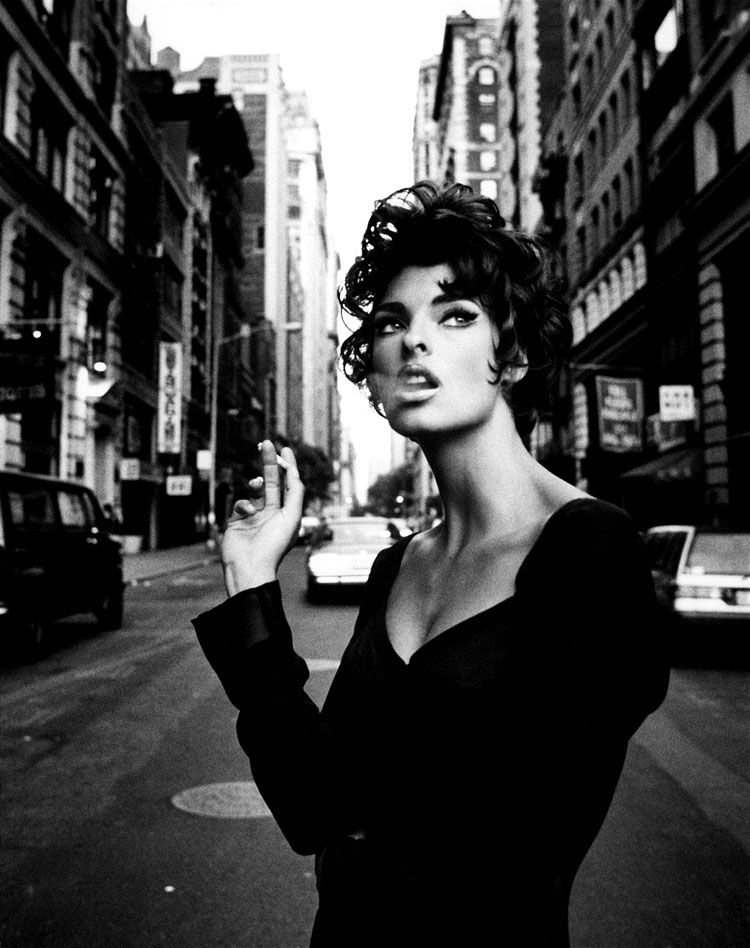
Gregory Crewdson
“What I am interested in is that moment of transcendence, where one is transported into another place, into a perfect, still world.”
—Gregory Crewdson
Crewdson is a household name amongst great American artists. Leaning stylistically on the work of Edward Hopper and Alfred Hitchcock, his photographs tell stories of small town America that range from the melancholic to the supernatural. The genius in the work lies in the ability to create genuine suspense as well as an entire narrative within a single image. It is as if he has boiled down the visual language of cinema as well as human experience and deployed it into one picture. His choice of location intentionally avoids any recognisable landmarks or distinguishable features, the result is photographs that are simultaneously recognisable, yet somehow other worldly. He cites Steven Spielberg, Edward Hopper and Diane Arbus as some of his inspirations. The filmic style is most apparent. His work is celebrated for it’s suggestion of a narrative, it leaves a lot of space for the viewer to fill in the blanks and complete the story. Massive in scale, his work is painstakingly produced, taking on the size and scale of a film production to produce a single photograph. The result is a look into an immensely rich and detailed other world, full of melancholy and ambiguity, that excites and intrigues the viewer. Whilst you may not have the budget to create scenes on this level, you are still able to employ his technique to recreate the effect of his images. Try standing a model under a single street light and shoot it wide angle. Use your own house, have a model stand in a window at night and light them from the back so they are silhouetted. Or simply frame your photographs in a 16:9 aspect ratio to make them look cinematic and see if that automatically makes the viewer of your image think that its from a film, and therefore part of a bigger story. You can play with peoples perceptions of photographs in this way. Take a series of unrelated images, crop them to 16:9 and then show them as a collection, your viewers will assume they are from the same film and attempt to piece together a narrative based on the visuals alone.

 Don’t forget, that while it’s easy to be intimidated by someone’s work and to think, ‘I’d never come up with an idea like that’, don’t forget, great artists inspire great artists. The above photograph by Gregory Crewdson, whilst excellent, is a reworking of the painting of Ophelia, don’t be afraid to seek inspiration from classic paintings as well.
Don’t forget, that while it’s easy to be intimidated by someone’s work and to think, ‘I’d never come up with an idea like that’, don’t forget, great artists inspire great artists. The above photograph by Gregory Crewdson, whilst excellent, is a reworking of the painting of Ophelia, don’t be afraid to seek inspiration from classic paintings as well. 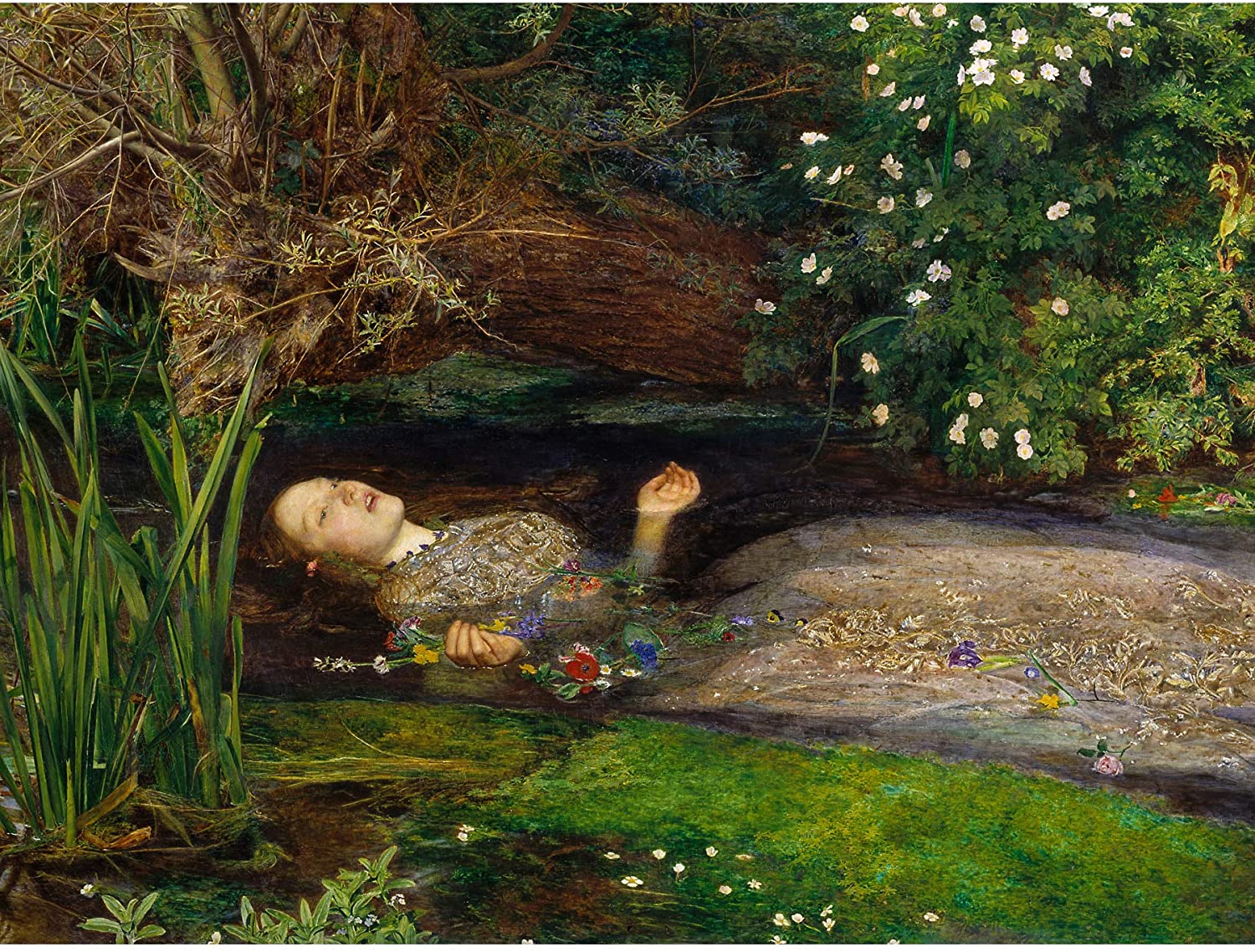
Eliot Porter
Eliot Porter was an American photographer known for his striking colour images of nature. A self-taught photographer, Porter began experimenting with colour photography in the 1930s. At first, he used the new medium to capture the abstract beauty of everyday objects. However, it was his photographs of the natural world that ultimately brought him fame. Porter’s distinctive style combined sharp detail with vivid colours, revealing the hidden wonders of the natural world. Throughout his career, Porter sought to celebrate the beauty of the natural world and to raise awareness of environmental issues. Today, his work remains an enduring testament to the power of colour photography. Some of his most striking images are of common bird species. I personally find this particularly inspiring as it is so easy to overlook the everyday beauty around us. Birds are a classic example of this. It’s easy to be seduced by the wildlife photographer of the year awards, photographs of far flung places where the photographer recounts tales of staying in a tent for weeks on end to get one photograph. Birds are everywhere, and even the often hated Starling is a thing of beauty. Try capturing a sharp picture bird in flight on your DSLR, then realise that Porter did it with film, and it was epic, and it was beautiful and it still looks incredible today.



Herb Ritts
“The key element is developing a style that’s yours and experimenting with it until you eventually discover what makes sense to you”
An icon of the fashion world, Ritts was a master at capturing shape and form. His talent for me lies in his ability to disarm whoever he is photographing. There is a vulnerability that the subject is willing to reveal to him, it gives his images an authentic quality where the viewer is not concerned with the technical elements of the images as they are absorbed by the emotional content. It’s no secret I love black and white images and his control of shape and contrast is masterful. This is undoubtedly a sexual charge to his images, weather photographing men or women he captures an energy in his subjects. To allow your subject to be so open takes a real understanding of people, marry that with technical understanding and you’ve got yourself the winning ticket.
Compare his work to Guy Bourdin further down this post, the approach and aesthetic is entirely different. In a subjective field such as photography it’s impossible really to class one as better than the other (for what it’s worth, I class Herb as better…), but the approach to photographing women in particular couldn’t be more different. Ritt’s photographers are so much softer and more elegant, you feel that he has love for his subjects and wants them to impart their subtle beauty upon the viewer. Read the section on Bourdin and then compare the two, you’ll see the the photographs are often much more a reflection of the photographer than of the subject.



Sebastião Salgado
“Your father and mother, when you were a child, they took precious photographs of you. They went to the shop on the corner to get them developed. That is a memory. That is photography.”
Easily one of my favourite photographers of all time. Salgado in my eyes is a legend. Not only an outstanding image maker, but a UNICEF goodwill ambassador and a champion of reforestation, something close to my heart. I also am a great admirer because he is living proof that engaging with projects and ideas that you genuinely believe in can produce a lifetime of outstanding achievement. Salgado chooses his own projects, plans and executes them. A lifetime of working in this fashion has led him to become a household name in photography, winning a whole host of awards and being knighted in 2016. A photojournalist in the truest sense, Salgado produces his images in a series and produces a breath taking narrative of a place or people’s rarely seen by the rest of the world. His work needs to be ‘experienced’ as opposed to just looked at. His mammoth size prints swallow you and pull you into his world. His images depict Life, in all its horror, glory and vulnerability. They capture emotion in a way that very few can. His pictures present a world as it is, without judgement of the subjects, on film, with no editing. That desire to capture truth in an image is probably what leaves the viewer ultimately in awe, what you’re being confronted with is real, and actually happened. As Salgado says himself, it takes a long time to create these images, you have to get into the flow with the subject and be ready for when the excitement rapidly unfolds before your eyes.
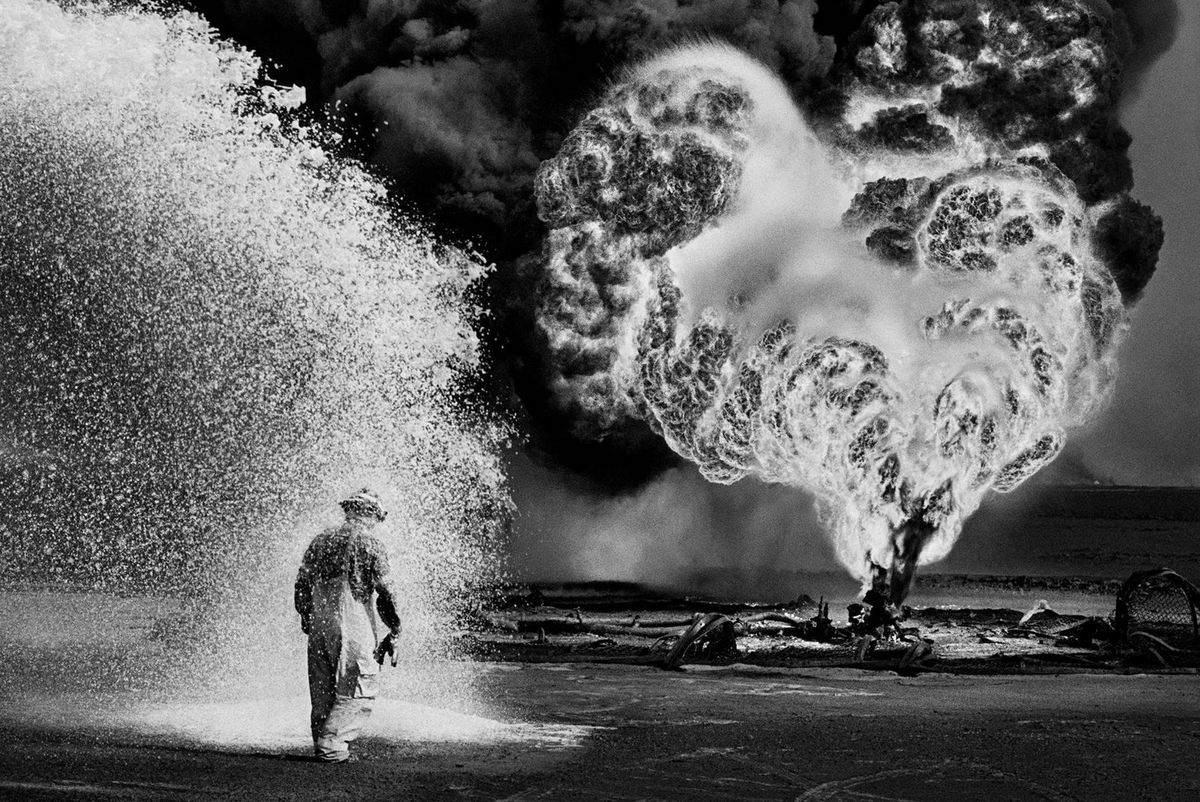

Guy Bourdin
Born in 1928 and working most actively through the 50’s, Another complex character to add to the mix. Guy Bourdin was, by all accounts, troubled. Abandoned as a child, notoriously macabre and a difficult man to work with. He is known to have mistreated his models, and at least two of his lovers committed suicide. His images are highly sexualised and influenced by the surrealist art movement, his models, highly glamourous and beautiful, often placed in absurd and quite jarring settings and situations. I must confess I do not like his work, I find it hugely disrespectful. Whilst the fashion industry essentially hires human beings to be living coat hangers, that does not necessarily carry any emotion with it, its simply transactional, a means to see the clothing in real life and to sell it to buyers. Bourdin’s work however, I feel carries an immense hatred towards women in it. It feels cruel. As if his intention is to mock his subjects, to objectify them to the point of making them less than human, merely to serve and nothing else. Take the below images for example. Whilst more extreme examples (maybe to highlight my own bias), the models appear either dead or in distress.


I do not feel challenged by them, mainly off put. On one shoot Bourdin covered his models in glue, and they soon after passed out. When confronted by his editor and told that they could have died, he remarked that would have been ‘beautiful’. A strange man indeed. Like it or hate it, his work does very successfully create a psychological thriller type tension. Even when shot in complete isolation his models don’t appear safe, there is something lingering, like a tragedy is about to befall them. I’m not a massive fan, but his work was hugely influential and moved fashion photography into a whole new eerie, sinister yet exciting dimension, and that why he appears on this list.


William Eggleston
What? I don’t get it – is typically the response I get when showing my students Eggleston’s work. Born in 1939 and something of a legend amongst art photography fans, Eggleston carries a certain mystique. A quiet man who seems to potter through a scene and every now and again, raises his camera to his eye, and ‘click’, a masterpiece. Eggleston is most commonly thought of as being the inventor and master of colour photography as an art medium. Historically black and white images were the artist photographers medium of choice, Eggleston switched to colour film, and a legend was born. His composition is what fascinates me, he is able to truly see an entire scene all at once.
 I think the true genius of his work however, is something so very very simple. And that is that time passes. Suddenly, after forty years, an image of anything and everything has some interest to it. It tells a story of that time and place, of the people the culture, the products, the food. Everything. Eggleston simply frames life in a aesthetically interesting way, and take a picture. I think this is largely overlooked with modern photography. The speed at which we can create new images means we are forever hunting for the next great picture to generate likes, comments and revenue. It will only be in thirty or forty years time when their true value is revealed, as documents of social history. Eggleston inspired modern day masters such as Jurgen Teller and David Lynch. Whilst I personally don’t think Teller hit the same artistic notes (whilst obviously being inspired by him), he has carved out a stellar career and is certainly a huge success. It’s easy to overthink his work, I think its best explained by a series of his own quotes:
I think the true genius of his work however, is something so very very simple. And that is that time passes. Suddenly, after forty years, an image of anything and everything has some interest to it. It tells a story of that time and place, of the people the culture, the products, the food. Everything. Eggleston simply frames life in a aesthetically interesting way, and take a picture. I think this is largely overlooked with modern photography. The speed at which we can create new images means we are forever hunting for the next great picture to generate likes, comments and revenue. It will only be in thirty or forty years time when their true value is revealed, as documents of social history. Eggleston inspired modern day masters such as Jurgen Teller and David Lynch. Whilst I personally don’t think Teller hit the same artistic notes (whilst obviously being inspired by him), he has carved out a stellar career and is certainly a huge success. It’s easy to overthink his work, I think its best explained by a series of his own quotes:
“I had this notion of what I called a democratic way of looking around, that nothing was more or less important.”
“It quickly came to be that I grew interested in photographing whatever was there wherever I happened to be. For any reason.”
“I never know beforehand. Until I see it. It just happens all at once. I take a picture very quickly and instantly forget about it.”
“I only ever take one picture of one thing. Literally. Never two. So then that picture is taken and then the next one is waiting somewhere else.”
“I don’t have a burning desire to go out and document anything. It just happens when it happens. It’s not a conscious effort, nor is it a struggle. Wouldn’t do it if it was. The idea of the suffering artist has never appealed to me. Being here is suffering enough.”
Martin Parr
Martin Parr is a British photographer known for his satirical and often controversial work. His photos often capture the outlandish or bizarre side of everyday life, and he has been praised for his ability to make even the most mundane subjects appear interesting. Parr began his career as a photojournalist, but he soon began to experiment with more creative approaches to photography. This led to him becoming one of the key figures in the so-called “new wave” of British photography in the 1970s. Since then, Parr has gone on to become one of the world’s most respected photographers, and his work has been exhibited in museums and galleries all over the world. Now then. I don’t like Parr’s work. I’ve never been a fan of any photographer who mocks their subjects, I have often found myself questioning Parr’s motives in his work, it doesn’t feel like social documentary because their is no humour, no shared joke. It’s as if he is looking in as a middle class man passing judgement on his subjects. His photographs are no doubt excellent. Composed beautifully, full of narrative and intrigue…I just don’t like them. Photography for me has always been either a celebration of it’s subjects or an objective truth that makes the viewer feel something. I don’t feel anything from these pictures, only that the man taking the photographs feels superior to his subjects. There is no shared experience to gaze upon and to relate to the people in them, it feels distanced on purpose.
“Photography is the simplest thing in the world, but it is incredibly complicated to make it really work.”
Honestly, I think I’ve simply got to do more research into his work and him as a person to try to understand it better. I’m always learning too, so forgive me Martin if I’ve misrepresented your ideas and intentions. Parr’s photographs will always offer a unique and sometimes controversial glimpse into the lives of ordinary people, and no doubt they will continue to fascinate and provoke debate for years to come.
“I go straight in very close to people and I do that because it’s the only way you can get the picture. You go right up to them. Even now, I don’t find it easy. I don’t announce it. I pretend to be focusing elsewhere. If you take someone’s photograph it is very difficult not to look at them just after. But it’s the one thing that gives the game away. I don’t try and hide what I’m doing – that would be folly.”


Joel Meyerowitz
Leading directly on from Martin Parr, lets look at and compare Joel Meyerowitz, an American photographer best known for his candid colour photographs of everyday life. Meyerowitz began his career as a street photographer in the 1960s, and his work quickly gained attention for its unique blend of humour and pathos. In the 1970s, he began experimenting with formal portraiture, and his portraits of celebrities and artists are now widely admired. Meyerowitz has also published several books of photography, including a monograph of his street photography and a book of portraits titled “Luminous Art.” His work I find to be a celebration of people and their lives, unlike Martin Parr, I think that Joel truly likes people, and wants to create images that either celebrate the truly bizarre occurrences on the street, or that show a collective life, a picture that is instantly relatable and pulls you into the picture. You’re no longer a casual observer of an image when you can relate to a subject, you are no longer a judge, because you see yourself in that picture, doing the exact same thing. I think it’s a much more fulfilling way to take pictures as the subjects are in on the joke, there is no judgement, only joy.
“You fill up the frame with feelings, energy, discovery, and risk, and leave room enough for someone else to get in there.”

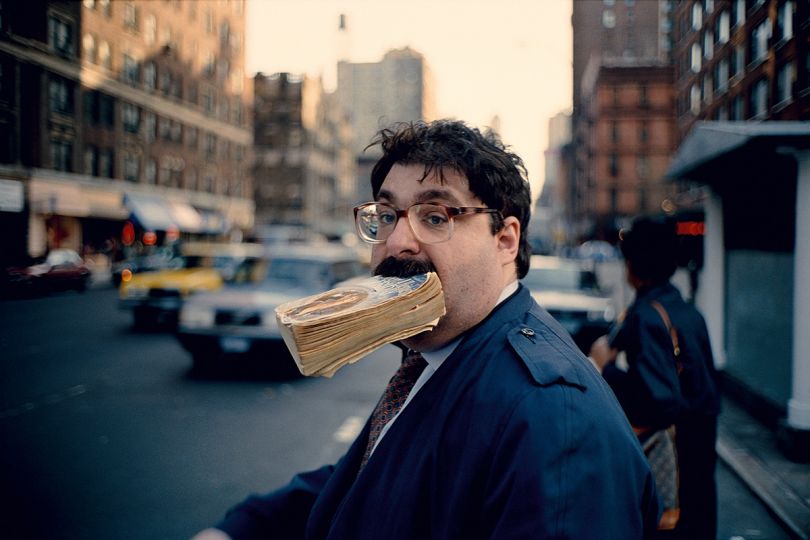
Nan Goldin
“I used to think that I could never lose anyone if I photographed them enough. In fact, my pictures show me how much I’ve lost.”
Nan Goldin is one of the most important photographers of our time. She is known for her deeply personal and often confronting images, which document her life and the lives of those around her with an unflinching honesty. Goldin has said that she uses photography to “create a diary of my life,” and her work provides a unique and powerful insight into the world she inhabits. From her early images of the drag queen scene in Boston, to her more recent portraits of survivors of domestic violence, Goldin’s work is marked by a deep humanity and compassion. Her willingness to bare her soul through her photography has inspired many other artists, and her work continues to challenge us to confront the harsher realities of our world.


Juergen Teller
“I’m interested in the person I photograph. The world is so beautiful as it is; there’s so much going on, which is sort of interesting. It’s just so crazy, so why do I have to put some retouching on it? It’s just pointless to me.”
Straight from the school (not literally) of William Eggleston, Juergen Teller, whilst not everyone’s favourite, certainly is a thought provoking photographer. Teller is a German photographer who is best known for his controversial images and unique portraits. He often uses unconventional settings and angles to capture his subjects, which has led to him being dubbed the “bad boy of fashion photography.” When i say unconventional, i mean often strange, and sometimes outright unflattering, which is most unusual for a fashion photographer. Rather than out rightly criticising his work, most viewers are left with the sentiment ‘I could have done that’. Is his work genius, or lazy? Is he cutting edge, or simply mocking an industry that is obsessed with being polished and showing a gritty underbelly? I’m no fan of fashion photography so I quite enjoy his images, they appear much more ‘in the moment’ or ‘of the time’. Rather than trying to be too clever, it’s a simple depiction, I would describe his work as – this is what it would have looked like if you were here stood with me. In addition to his fashion work, Teller has also photographed celebrities, politicians, and athletes. His images are often haunting and provocative, and he has been both praised and criticized for his distinctive style. Whether you love or hate his work, there’s no denying that Juergen Teller is one of the most interesting contemporary fashion photographers.


Jeff Wall
Jeff Wall is a contemporary artist who is best known for his large-scale backlit Cibachrome photographs and artworks. Born in Vancouver, British Columbia, in 1946, he received a BFA from the University of British Columbia in 1970 and an MFA from Yale University in 1972. After living in London and New York City, he returned to Vancouver in 1974, where he has resided since. Wall’s early work consists of super graphic treatments of Vancouver street billboards. In the 1980s, he began to use photography in his artworks, often incorporating found images or slides into his pieces. Since the mid-1990s, he has primarily worked with digital photography, using museum-quality Lambda prints to create his large-scale works. Wall’s subjects range from mundane cityscapes and interiors to figure studies and portraits. His artworks are included in the collections of major museums around the world, including the Museum of Modern Art in New York, the Solomon R. Guggenheim Museum in New York, the Tate Gallery in London, and the Reina Sofia Museum in Madrid.


Richard Misrach
Richard Misrach is a talented photographer who has been awarded many accolades for his work. Born in 1949, he grew up in San Francisco and would go on to study at the University of California, Berkeley. After graduation, he moved to England to pursue a career in photography. It was there that he first developed an interest in landscape photography. In 1975, he returned to the United States and began working on a series of photographs documenting the American desert. The resulting work, entitled “Desert Cantos,” won him widespread acclaim and cemented his reputation as one of the foremost photographers of our time. Today, Misrach continues to produce stunning images that offer new ways of seeing the world around us. His work reminds us of the beauty and fragility of our planet and challenges us to ponder our place within it.
“I’ve come to believe that beauty can be a very powerful conveyor of difficult ideas. It engages people when they might otherwise look away.”



Vivian Maier
Vivian Maier was a twentieth-century street photographer who captured over 150,000 images during her lifetime. Born in New York City in 1926, Maier began taking pictures when she was given a camera as a gift from her father. She continued to photography throughout her life, although she never pursued it as a career. Instead, she worked as a nanny and housekeeper for much of her life. It wasn’t until after her death in 2009 that her work began to receive widespread attention. In 2007, a Chicago historian named John Maloof purchased a box of Maier’s negatives at an auction and began to print and exhibit her work. This led to increased interest in Maier’s life and work, and her photographs have since been exhibited around the world. Although she was unknown during her lifetime, Vivian Maier is now considered one of the most important street photographers of the twentieth century.
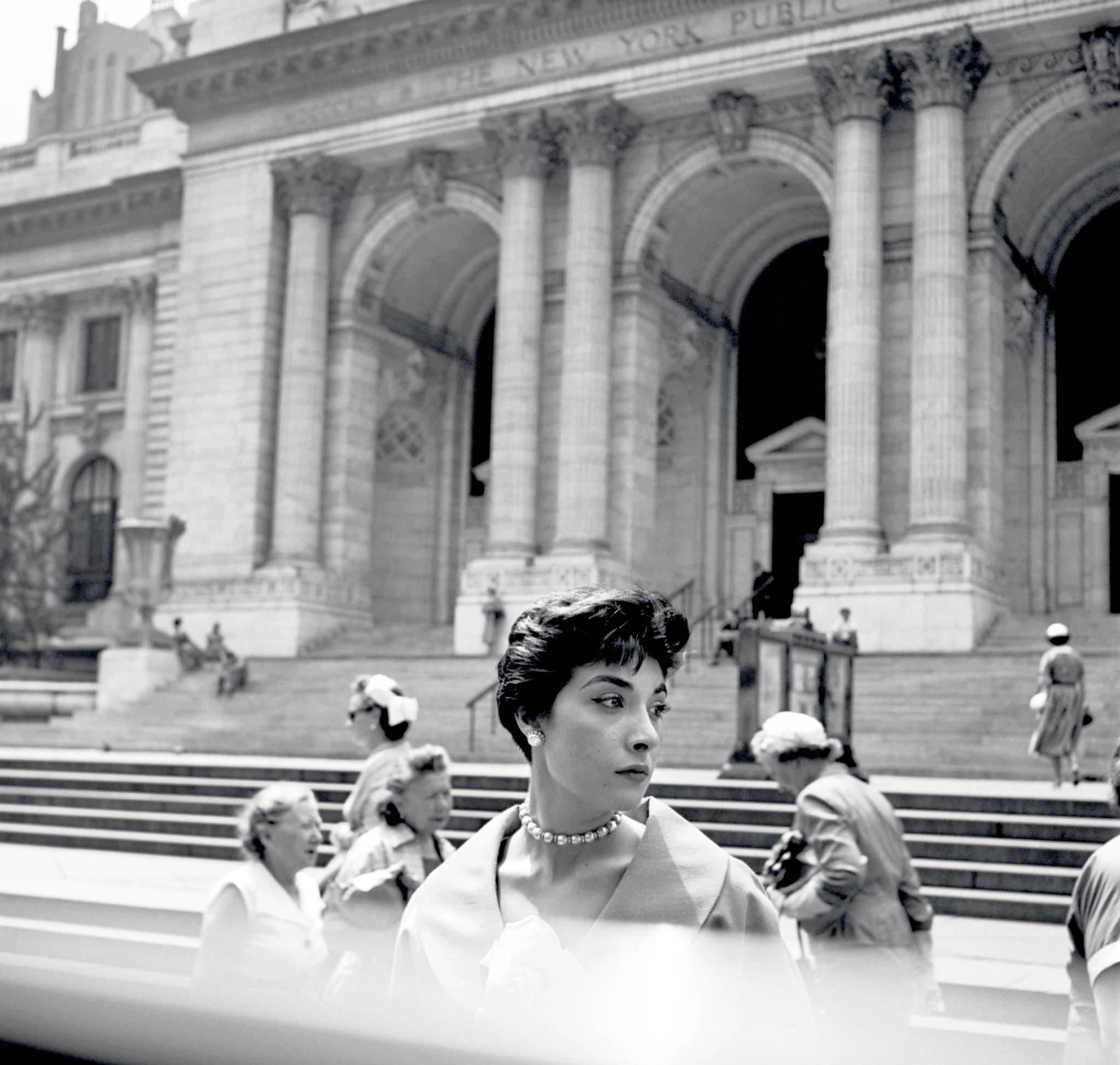
Elliot Erwitt
Elliot Erwitt is one of the most celebrated photographers of his generation. Born in Paris in 1928, he moved to the United States with his family as a child and later served in the Army during the Korean War. After returning to civilian life, he studied photography at the Art Center College of Design in Pasadena, California. In 1953, he had his first solo exhibition at the Museum of Modern Art in New York City. Over the next six decades, Erwitt’s work would take him all over the world, from China to Cuba to the Soviet Union. He has documented some of the most important moments of the 20th century, including the Kennedy assassination and the civil rights movement. His photographs have been featured in numerous books and exhibitions, and he has won many prestigious awards, including a Lifetime Achievement Award from the International Center of Photography. Today, at the age of 91, Elliot Erwitt is still active as a photographer, and his work continues to inspire new generations of shutterbugs.
“All the technique in the world doesn’t compensate for the inability to notice.”

Diane Arbus
“The thing that’s important to know is that you never know. You’re always sort of feeling your way.”
Diane Arbus was an American photographer known for her portraits of marginalised people, which she captured in a naturalistic style. Arbus was born in 1923 into a wealthy New York City family and she initially pursued a career as a fashion photographer. However, she soon became interested in exploring more challenging subjects, instead of the airbrushed perfection that was typical of fashion photography at the time. Arbus developed her own style of photography, which was characterised by its intimate and unguarded quality. She often ventured into dangerous or taboo subjects, such as mental illness and prostitution. Arbus’s photographs are now widely recognised as some of the most important and influential images of the 20th century.

Irving Penn
An illustrator before turning to photography full-time in the early 1940s Penn quickly found success shooting covers for magazines like Vogue and Harper’s Bazaar. In 1947, Penn travelled to Mexico, where he took some of his most iconic photos, including portraits of Frida Kahlo and Diego Rivera. Penn continued to work throughout his life, experimenting with different techniques and subjects. He died in 2009, at the age of 92. Today, his work is widely hailed as some of the finest in the history of photography.
“A good photograph is one that communicates a fact, touches the heart and leaves the viewer a changed person for having seen it. It is, in a word, effective.”
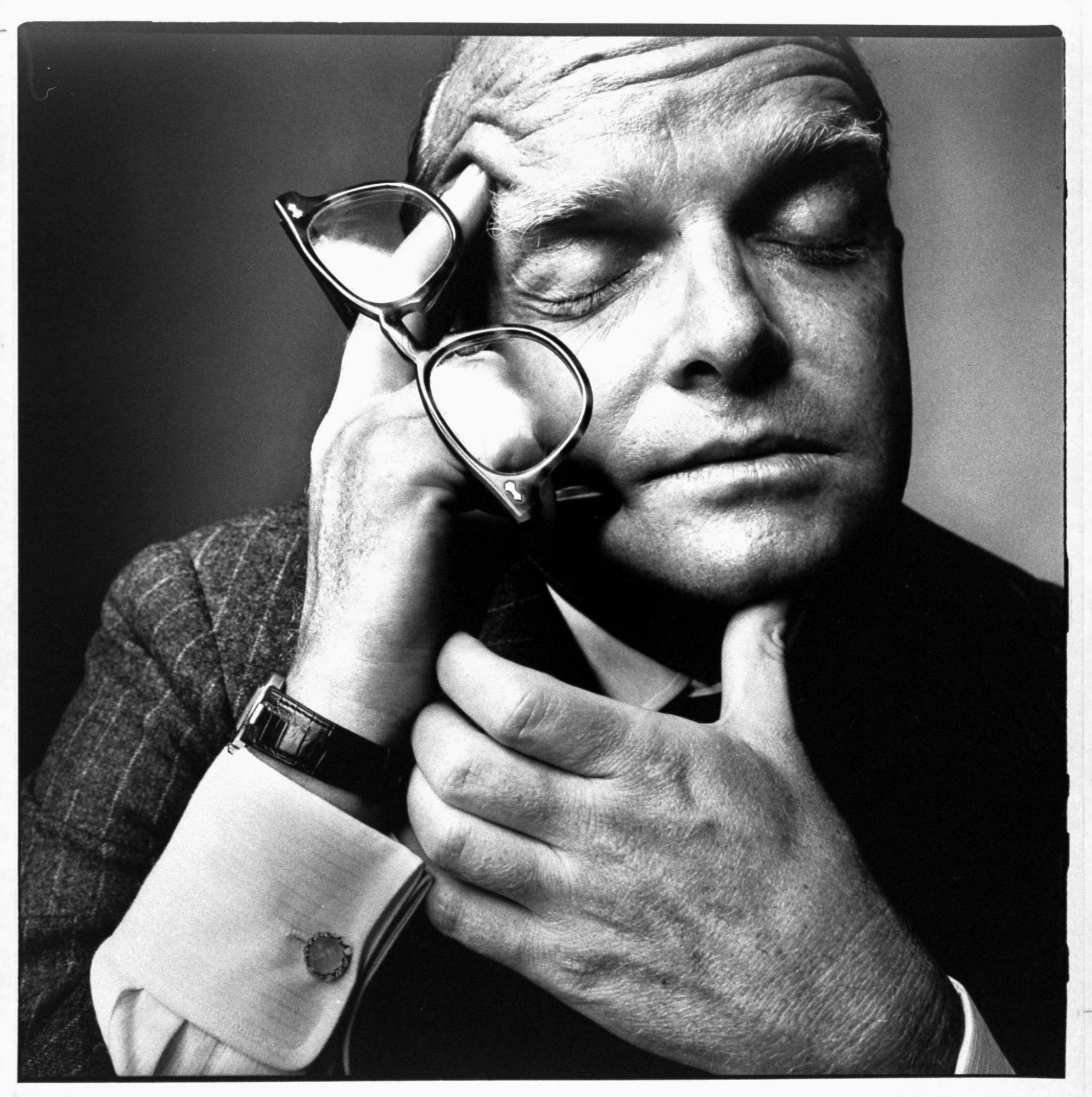
Cecil Beaton
Cecil Beaton was a British photographer, painter, and stage and costume designer. He was born on January 14, 1904, in London, England. Beaton started his career as a photographer for Vogue magazine in 1926. He also took portraits of many famous people, including the British royal family. In 1944, Beaton became the first fashion photographer to be knighted. He died on January 18, 1980, at the age of 76. He began his career as a society photographer, capturing the glamorous worlds of London and New York. However, he soon began to experiment with fashion photography, and his inventive style helped to shape the look of Vogue magazine in the 1930s. In the 1940s, Beaton turned his lens towards war-torn Europe, producing some of the most iconic images of the Second World War. After the war, he returned to society photography, but his work took on a more candid and intimate feel. In addition to his photographic work, Beaton was also a successful costume designer, and he won an Academy Award for his work on the film “My Fair Lady”. Throughout his career, Beaton strived to pushing boundaries and experimenting with new techniques, and his work has left a lasting legacy.
“Be daring, be different, be impractical, be anything that will assert integrity of purpose and imaginative vision against the play-it-safers, the creatures of the commonplace, the slaves of the ordinary.”

Cindy Sherman
“I’m really just using the mirror to summon something I don’t even know until I see it.”
Cindy Sherman is one of the most well-known photographers of our time. Born in 1954, she grew up in Glen Ridge, New Jersey. After attending the State University of New York at Buffalo, she moved to New York City in 1977 and began her career as a professional artist. Sherman is best known for her “Untitled Film Stills” series, in which she staged and photographed herself in a variety of guises, from movie stars to pin-up girls to housewives. By using herself as both model and filmmaker, she challenged traditional concepts of identity and gender. Sherman has continued to experiment with her art throughout her career, and her work has been exhibited in museums and galleries all over the world. Her impact on the world of photography is undeniable, and she remains one of the most important artists working today.

Robert Frank
Robert Frank was a pioneering photographer who helped to redefine the art form in the mid-20th century. Born in Switzerland, Frank moved to the United States in 1947 and began working as a freelance photographer. His early work captured the energy and optimism of post-war America, but he soon began to experiment with more experimental techniques and subjects. In 1958, he published “The Americans”, a ground-breaking photo book that challenged traditional ideas about what photography could achieve. “The Americans” is now considered one of the most important works of 20th-century photography, and Frank’s influence can be seen in the work of many subsequent artists. Despite his revolutionary contributions to the world of photography, Robert Frank remained humble and down-to-earth throughout his life, always striving to capture the essential humanity of his subjects.
“When people look at my pictures I want them to feel the way they do when they want to read a line of a poem twice.”

Richard Avedon
Avedon’s fashion and portrait photography helped to define an era, and his images are now icons of American culture. Avedon was known for his clean, elegant style and his ability to capture the essential character of his subjects. He shot some of the most famous photographs of the 20th century, including the portrait of Marilyn Monroe that appeared on the first issue of “Vogue” magazine. Starting as a photographer behind the scenes of theatre productions, Avedon took portraits of actors and clowns both in costume and mid performance as well as documenting their lives behind the make up. His portraits are incredible. He had a truly unique ability to allow his subjects to be vulnerable in his presence, he could peel back the layers and capture a portrait that truly exposed the essence of his subject. Whilst his portraits of celebrities are excellent, his stand out body of work was his collection of portraits taken across middle America. These happen to be some of my favourite photographs of all time.
“A portrait is not a likeness. The moment an emotion or fact is transformed into a photograph it is no longer a fact but an opinion. There is no such thing as inaccuracy in a photograph. All photographs are accurate. None of them is the truth.”
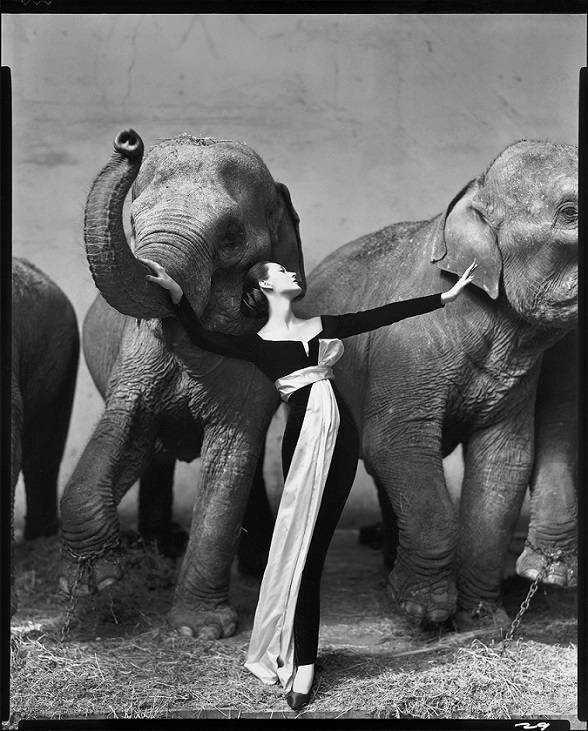
Andreas Gursky
Gursky is best known for his large-scale, highly detailed photographs capture scenes from everyday life, ranging from chaotic cityscapes to orderly rows of identical products in a supermarket. By challenging traditional ideas about composition and scale, Gursky has pushed the boundaries of what is possible in photography. His work is widely celebrated for its technical mastery and emotional impact, and it has been exhibited in museums and galleries all over the world. In addition to his impressive body of artistic work, Gursky also teaches at the Dusseldorf Academy of Arts, where he continues to inspire new generation of photographers.
“I am never interested in the individual, but in the human species and its environment.”

Henri-Cartier Bresson
“To take a photograph is to align the head, the eye and the heart. It’s a way of life”
Where would we be without Bresson and his photographic exploration of the decisive moment? Henri-Cartier Bresson was a French photographer and one of the founders of the Magnum Photos agency. His work emphasized spontaneous and candid moments, often capturing people in everyday situations. He was also a master of black and white photography, using light and shadow to create stunning images. Cartier-Bresson’s work has influenced generations of photographers, and his legacy continues to inspire artists today.


Ansel Adams
Probably THE most influential photographer of the 20th century. His black-and-white images of the American West are some of the most iconic images in the history of photography. Adams was born in San Francisco in 1902 and began taking photographs when he was just 14 years old. He quickly developed a love for the outdoors, and his early work focused on landscapes and nature. In 1941, he co-founded the first fine art photography gallery in the United States. Adams also helped to establish the first department of photography at a major university. His work has been exhibited in museums all over the world, and his legacy continues to influence photographers today.
“You don’t make a photograph just with a camera. You bring to the act of photography all the pictures you have seen, the books you have read, the music you have heard, the people you have loved.”

